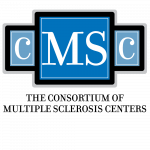Background: Expenditures for intravenous (IV) disease-modifying therapies (DMTs) for multiple sclerosis (MS) include costs beyond wholesale acquisition price such as administration, nursing services, facility fees, pharmacy costs, pre-medication, etc. These costs may also vary depending on the infusion center setting (site of care).
Objectives: The study evaluated treatment completion, the real-world total cost over 2 years, and cost by infusion center setting for ocrelizumab (OCR), natalizumab (NTZ), and alemtuzumab (ATZ) in patients with MS.
Methods: This retrospective cohort study used the HealthCore Integrated Research Database and included continuously enrolled adult patients with MS initiating an infusion (index date) with OCR, NTZ, and ATZ from April 1, 2017 until July 1, 2019 with 12-months pre- and 24 months post-index date. Infusion treatment completion per product label was evaluated. Annual total all-cause cost of care was evaluated as the sum of the drug, infusion administration, and medical costs for the first and second year of follow-up, further stratified by site of care.
Results: Overall, 1058, 166, and 45 patients were included for OCR, NTZ, and ATZ cohort, respectively. Among patients initiating OCR, 77.5% completed the recommended dosing in the first year, and 61.6% completed the dosing in both years. Similarly, the 2-year treatment completion reported for NTZ and ATZ was 49.4% and 72.7% respectively. For year 1, mean total cost of care for OCR, NTZ, ATZ cohorts were $125,597 (standard deviation [SD]=$72,274), $117,033 (SD=$57,102), and $179,809 (SD=$97,530) respectively. For year 2, mean total cost of care for OCR, NTZ, and ATZ cohorts were $109,618 (SD=$75,085), $106,626 (SD=$54,872), and $108,636 (SD=$77,973) respectively. For OCR, the hospital outpatient setting was the most common (58%) and costliest (mean [SD]=$135,992 [$82,244]) site of infusion while home infusion was the least common (2.9%) and inexpensive (mean [SD]=$94,645 [$31,708]).
Conclusions: Real-world infusion treatment and medical costs for commercially insured patients were higher than the perceived expenditures based on wholesale acquisition cost and administration costs via sources like physician-fee schedules. Information on treatment completion and incremental differences in costs by the site of care is critical for considerations of treatment/coverage decisions.
[learn_press_profile]
